
Photo (c) Tom Burlison/Shutterstock |
Choices
By Pam Laricchia
Unschooling Paradigm: Choices are key to learning.
Mainstream Paradigm: Parents who make most of the decisions for their child are modeling the right thing to do so that their child will remember and make those same choices as a young adult and beyond.
Paradigm Shift: Instead of learning what choices to make, it’s better to learn how to make informed choices.
Unschooling children are picking up skills and gathering information all the time, but at the same time they are learning how to navigate the world. How to make choices and decisions in both unique and everyday situations is a key life skill. How do we help them gain experience with this?
Judging Choices
It’s a beautiful fall day and you are looking forward to going for a walk. Jeremy quickly pulls on his running shoes, dashes out the door, and shouts, “Come on, Mom!” Your smile falters as you notice his sweater still hanging on the hook, remembering the talk you gave him just yesterday about wearing it when he goes out in this cooler weather. As you walk through the door you say firmly, “Jeremy, get back here and put on your sweater!” A beat passes and you add, “NOW!” Running back he protests that he’s not cold, but you insist. He does as he’s told but his excitement has waned and the joyful stroll you envisioned has morphed into a determined march around the block accompanied by repeated moans about the sweater, and you both head back inside.
You may think your child needs to wear a sweater out for a walk on this fall day, but only the child can really tell whether they’ll feel best with or without it. They may well be warm enough without it because they’re running ahead and back, or their body temperature naturally runs higher than yours right now. Absolutely offer a sweater if you think it seems cool out, but there’s no need to insist; bring it along if you think they might change their mind. With the choice of a sweater available, they may decide to wear it after being outside for a while, or not. But they will have added a bit of real experience that will factor in next time they are in in similar circumstances. They are learning how to analyze situations and make choices.
One of the basic skills for anyone exploring the world and learning through living is making choices: What do I want to do today? Should I sign up for that interesting-sounding workshop? Do I want to take a bath or a shower? Eat a sandwich or a burger? Should I quit swimming lessons? Do I want to wade into the river or take the path through the trees?
Often, choices are rather basic, mostly personal preference, with no significant consequences one way or the other. But making those small choices is good preparation for when the bigger ones come along.
Helping your child gain experience in making choices entails a lot of trust from you, certainly at first. You can develop this trust in a couple of ways. One is to examine your thoughts surrounding choices. Spend some time reflecting on whether the same choice is necessarily right for everyone. Remember, your child is not just an extension of you. It’s not hard to imagine that different choices in the same situation could work out well for different people, yet it’s still pretty easy to fall into the trap of thinking that you know the best choice for another person: a spouse, a friend, or especially a child you love and want the best for. A second way to develop trust is through experience. We’ll talk about that in a minute.
As part of pondering the idea of there being a range of suitable choices in similar situations, you will likely contemplate the inverse: If you believe your choice is the best choice, the only choice, where do you go from there? Is it helpful to manipulate others into seeing that your choice for them should be their choice as well? Thinking further you may begin to realize your judgment of the situation is tied up in your personal history; you really can’t know everything about someone else’s thoughts and goals, their emotional landscape, their physical reality. While you have their best interests at heart, you can’t know for sure what the best choice is for them.
While developing this trust, it is important that you don’t judge their choices, even implicitly. Real choice is lost if you even subtly manipulate them with a sigh or a certain look. Certainly discuss the options, but it’s important that they feel free to follow their preference because people learn best from an experience when it is their own. If they are living someone else’s choices, they are often learning something different. Can you recall a situation where this was true for you? Even as an adult, when you’re told what to do, it is human nature to feel a twinge of rebellion, especially when you think there is a better choice. You may well do what you’re told, but what you are likely thinking about and learning from is not the situation at hand, but rather your feelings toward the messenger—your boss, your coach, or your parent.
As I mentioned earlier, the other way you can learn to trust your child is through experience. Each time your child makes a considered choice that works out, you gain some experience. Each time your child makes a considered choice that wasn’t the choice you’d advise and it still works out, you gain even more experience. And you trust a bit more. Then you see another choice work out, and another. Then you see a choice that didn’t work out so well, and you notice your child incorporate that information into their next related decision. More learning in action. With experience, you become less fearful and more trusting of your child making their own choices. Eventually you and your child work out a harmonious relationship around choices where your input is thoughtfully considered by your child, and their decision is respectfully accepted by you.
Learning from Living
Kaylee runs to the sink to refill her teapot for the umpteenth time this afternoon. She giggles, “My teddy bears are thirsty again!” As you peel carrots you reply, “That’s nice, Kaylee. Dinner will be ready soon. Don’t forget you have to clean up before we eat.” Twenty minutes later you tell her it’s time to put her teddy bears away and come to the table for dinner. She cries, “No! I still want to play with them!” You remind her she agreed to put them away before dinner when you agreed to carry out her favorite stuffed bears. She sobs and pleads, but you hold firm to your agreement. She eventually joins the family at the dinner table, quietly picks at her food for a while, and asks to be excused.
Building on the awareness that choices are often personal preference, not right or wrong, and that subverting another person’s choices often derails their learning, let’s look more closely at how children learn from living their choices.
Most of the day-to-day decisions in a child’s life may seem significant to the parent in the moment but in the bigger picture of childhood they are often inconsequential. To whom does it really matter if your child wears their favorite Halloween costume to the grocery store? In these moments, they have the opportunity to revel in the attention and delight of the other shoppers as they admire the princess gown, and to decide next time that they’d like a quiet trip and choose to forgo the costume. Or if they eat her favorite peanut butter sandwich for breakfast, lunch, and dinner this week? It gives them the time to discover when they have had their fill of peanut butter and would like to try something new. What if they set up a tea party in the living room for their teddy bears and wants to keep it there to enjoy tea and dainty finger sandwiches for the next few days? After being immersed in all the tea-related fun they can imagine, they eventually notice that they’d like a clean slate for their next creation. And they may well discover that a tidy room can be quite as exciting as a busy one.
As the parent, you can take a moment to look at the bigger picture and realize these are wonderful and exciting adventures to your child – more exciting to them than a clean living room would be to you. It’s about giving the child the opportunity to discover these things on their timetable, as they have meaning for them, rather than on the parent’s timetable, where they don’t have meaning and the connections aren’t made.
Let’s take another look at my son’s karate interest from the perspective of timing. Michael’s interest in martial arts was evident for quite a while before he decided to try out classes at a dojo. When I first mentioned that he might enjoy karate classes, he replied noncommittally and at least a year passed before he asked to go. At the time I offered, we discussed it a bit, and I left the choice to him.
His enjoyment in going to the dojo now does not mean that his choice to wait was wrong, nor does it mean that I should have cajoled or convinced him to try it back then. It was not a missed opportunity; he was simply not ready. If I had pushed him to go earlier, he may have ended up enjoying himself and continuing, but he may also have been turned off the sport itself because, even though he was interested, he would be going at my behest, not directly from his own desire to explore karate. In fact, the dojo is a wonderful example of pursuing an interest when a person is ready; there are beginner white belts of all ages, from age four to over forty.
Experience in making the smaller choices in life while growing up has a number of wonderful benefits for children: they get to know and understand themselves well — their likes and dislikes, what they excel at, and what they find challenging; they gain lots of experience in analyzing situations and choosing which path forward to take; and their parents are close by to talk to while analyzing situations, available to share their experiences and thoughts. Young adults aren’t left to ponder whether their choices are truly theirs, or are in reaction to their parents’ control.
For parents, one of the significant advantages to allowing your children to make their own choices is that you are close by and easily available to provide whatever support and feedback your children might be looking for. Contrast that with dictating most of their childhood decisions until they move out on their own. This leaves them mostly alone to learn about themselves and figure out how they best function, just as they reach a point in their lives where the ramifications of their choices can be much greater.
But keep in mind that this is all at an appropriate level for the child. If they just want you to grab an outfit out of their drawer and help them get dressed, do that; if they just want some quick food to munch on while busily building with LEGO, just bring them a plate with some food that you’re pretty sure they’ll like. Not all situations need analysis and defined choices. What’s important is embracing the time and attention to discuss situations when the child sees options and is interested in choosing. Never forget that earning happens when there is interest.
How Does This Apply to Academic Learning?
In terms of learning and building their web of knowledge, choosing which threads to pursue now and which to leave for later also helps children build experience and confidence. Without choice in this area, they aren’t free to explore what they are most interested in, which is where the best learning is found. And if that thread they decided not to pursue last month comes up again this month related to something else, they begin to see that it might be a useful bit of information to have or skill to pick up and may soon choose to give it their attention.
Notice a lot of these examples are not directly related to more academic learning. That should become less of a surprise as you ponder learning through living. A person doesn’t typically think in terms of academic subjects outside of school. From the perspective of learning, these more academic topics and skills are intertwined in life, not separated out. When making choices, it’s not, “Should I learn math or English today?” but maybe, “Do I want to work on programming that character interaction or write that game review this morning?” Remember, the best learning – learning that is understood and remembered – is in the living.
Let’s look for a moment at those who grew up being taught to accept their parents’ choices as best. Not only do they have minimal experience in analyzing situations, they have likely learned not to trust themselves. For example, if Samantha had had more experience with understanding herself and making choices, she may have realized that the law was really her father’s dream, before applying to law school.
With big career-related choices, is a society-respected career (one many parents dream of for their children) right for everyone? Maybe being a trial lawyer is a great choice for Ellen, who loves to delve into conflicts in search of fine details and enjoys public speaking, but not for Samantha who went to law school because it was expected of her, even though she really excels at web design (her law firm now has a great website). Soon, Samantha is designing sites on the side for other clients, and eventually sets up her own design shop. Are Ellen’s and Samantha’s choices right or wrong? Neither, just different. But it may have been nice for Samantha if she’d realized this earlier and didn’t drag herself through the years and expense of law school.
Still, it’s hard to classify Samantha’s law school attendance as definitively wrong; it was more of a detour on her journey. As she got older she realized that being a lawyer was not interesting or fulfilling for her, but it was really just a different path, albeit a longer one, to the person she is today. But the sooner she discovers this about herself, the sooner her life is more enjoyable.
A person makes fewer detours as an adult if given the time and opportunities during childhood to really understand themself, how they tick, and to incorporate that knowledge into their decision making when evaluating choices. Also, seeing how their perspective and goals change over time, especially during the teen years, helps them more easily understand and accept their changes of perspective and goals during adulthood, seeing them not as failures but as part of living. They are gaining real life experience.
Pam Laricchia loves, learns, and lives joyfully with her family in Ontario, Canada. Unschooling since 2002, she particularly enjoys seeing her children live with such incredible intention. She says, “Choosing the best path for themselves from the rich palate of life gives them so many opportunities to learn about themselves: It’s not always easy, but it is incredible.” When moments appear in the flow of her family’s lives, she enjoys writing, puzzles, games, web development, and baking. Her website is at livingjoyfully.ca, where you’ll also find her books and podcasts.
Copyright © Life Media
Privacy Policy
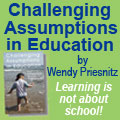 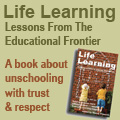 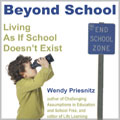
 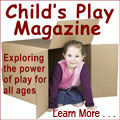 
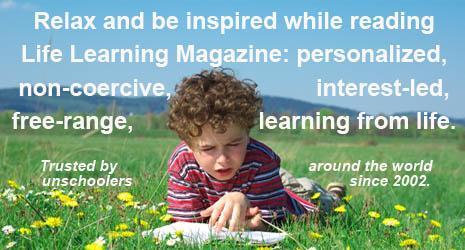
|

